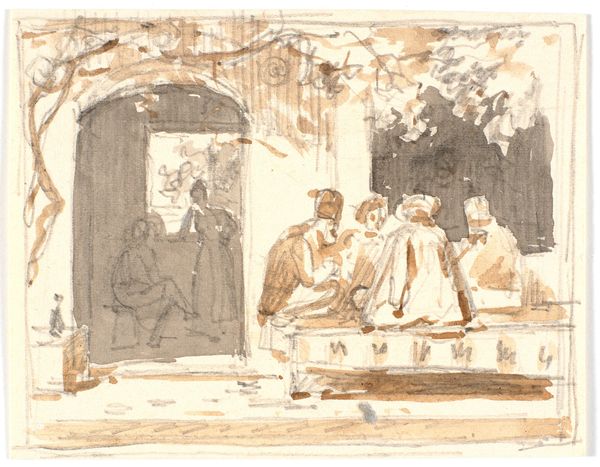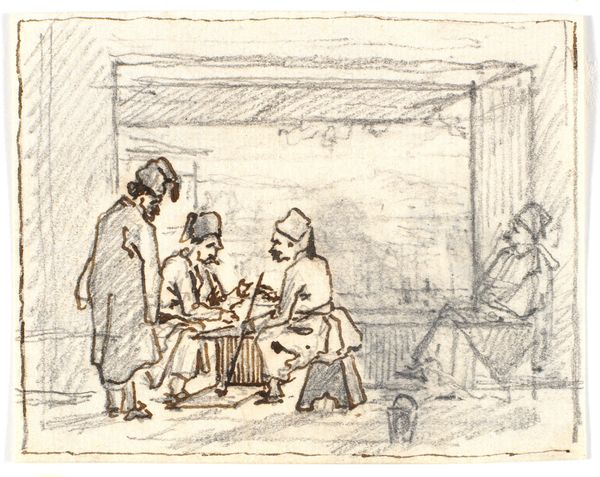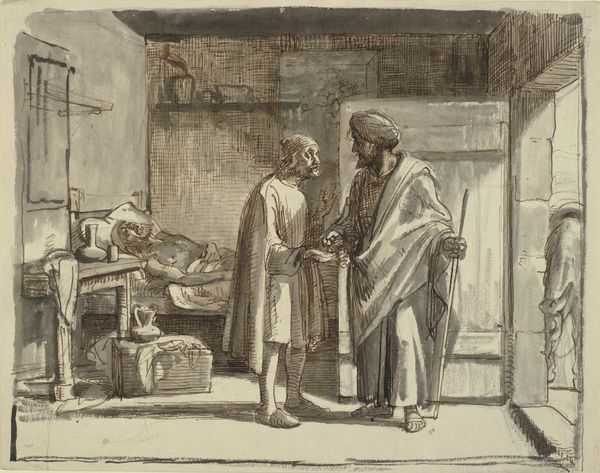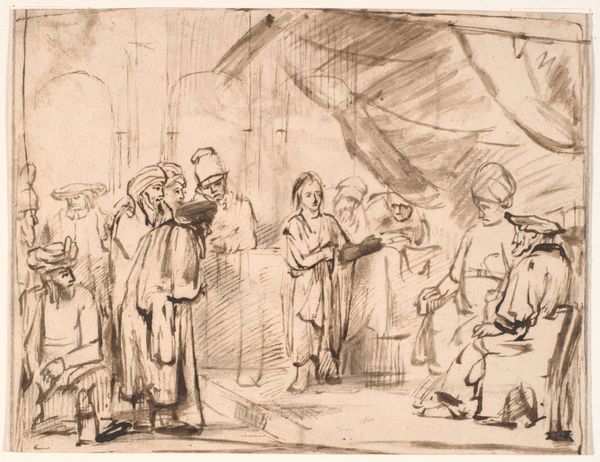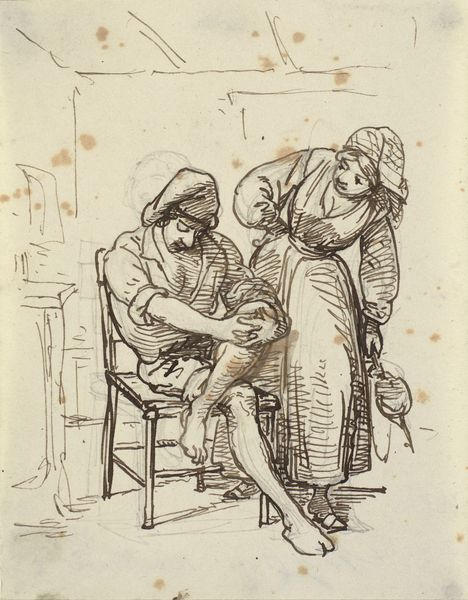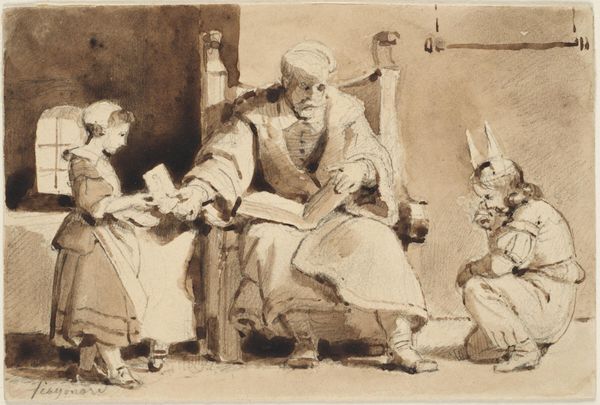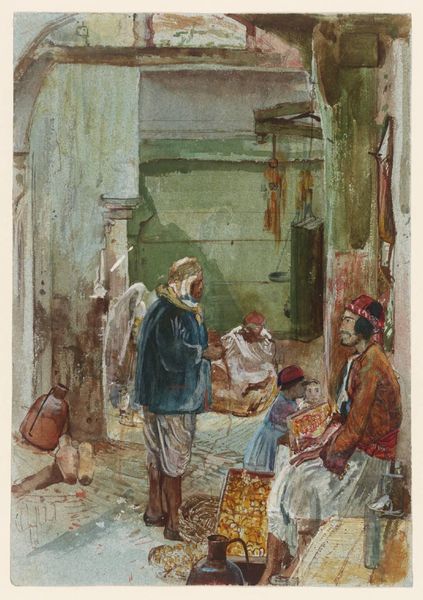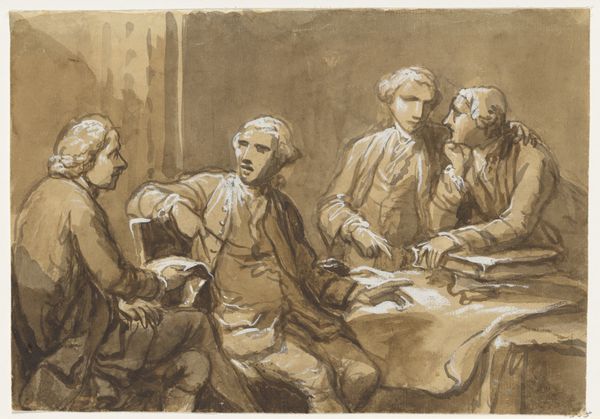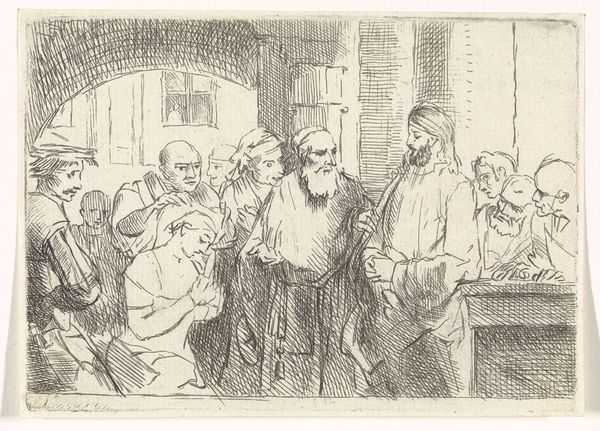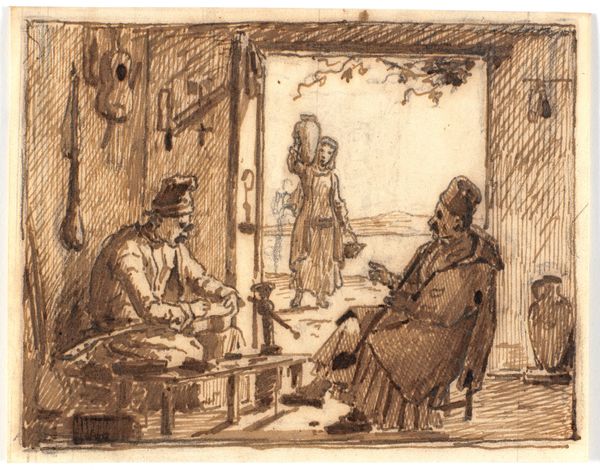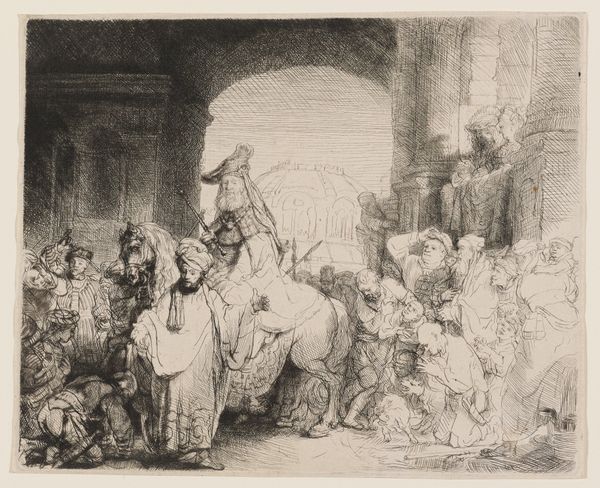
drawing, painting, watercolor
#
drawing
#
painting
#
watercolor
#
romanticism
#
orientalism
#
watercolour illustration
#
genre-painting
Dimensions: 90 mm (height) x 146 mm (width) (bladmaal)
Editor: This is Martinus Rørbye’s “A Turkish Notary Drawing Up a Marriage Contract,” painted in 1836 using watercolor and drawing. I'm struck by the contrast between the figures rendered in color and those sketched in outline, creating almost two separate realities. What’s your interpretation of the visual symbols here? Curator: Rørbye presents us with a compelling image of cultural encounter. The figures in full color represent a specific transaction, the marriage contract, infused with a sense of immediacy. Notice the man’s intense gaze, almost demanding adherence to tradition. While the background figures sketched behind might imply collective memory, witnessing and subtly reinforcing the ritual's importance. The marriage contract displayed has great significance. Do you think it might also refer to how European culture views "the Orient", a projection screen for fantasies about gender, sexuality and power? Editor: That’s a fascinating idea! The stark visual difference does reinforce that sense of "otherness," potentially exoticizing the scene, and prompting further questions about who this piece was painted for. I wonder what the significance of the document's central positioning suggests? Curator: The central positioning of the document draws our attention to the legalities and negotiations embedded within marriage itself – it's about societal structure, a formal contract negotiated within families as much as the relationship between two individuals. The symbolic exchange occurring in this setting is what really catches the eye, pointing to an underlying narrative where marriage functions not merely as romantic expression but more to cultural cohesion and lineage continuity. Does the image now evoke even stronger senses regarding memory? Editor: Definitely. The figures represent a mix of real people involved in the marriage, their societal expectations, with maybe some romantic ideal, which definitely reinforces the picture's themes for memory’s sake. Curator: This painting is very much representative of how symbols operate in tandem; they embody, evoke, while subtly altering meaning contingent upon the context. It's this intricate dance within historical perspective that truly captivates. Editor: I agree. Looking closely, I learned that the piece reveals layers about both how we understand marriage but how cultures interact.
Comments
No comments
Be the first to comment and join the conversation on the ultimate creative platform.
